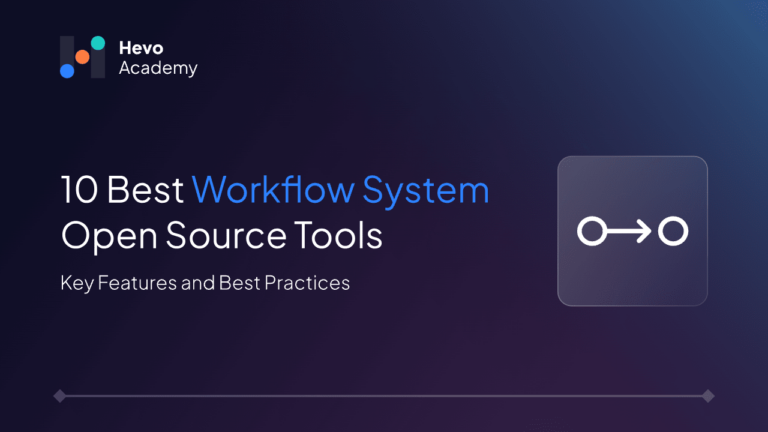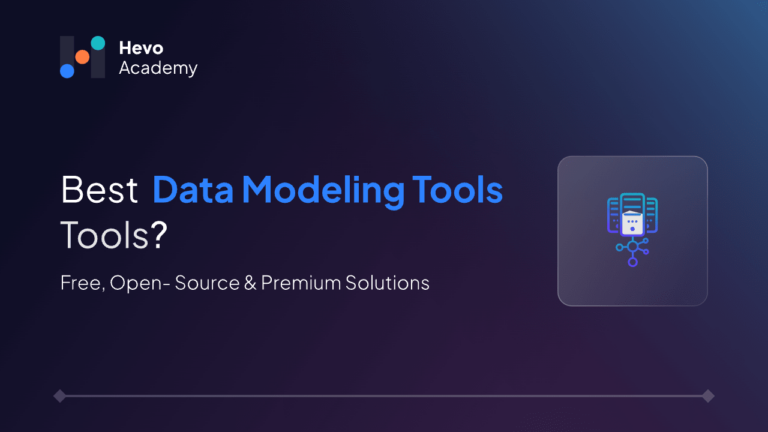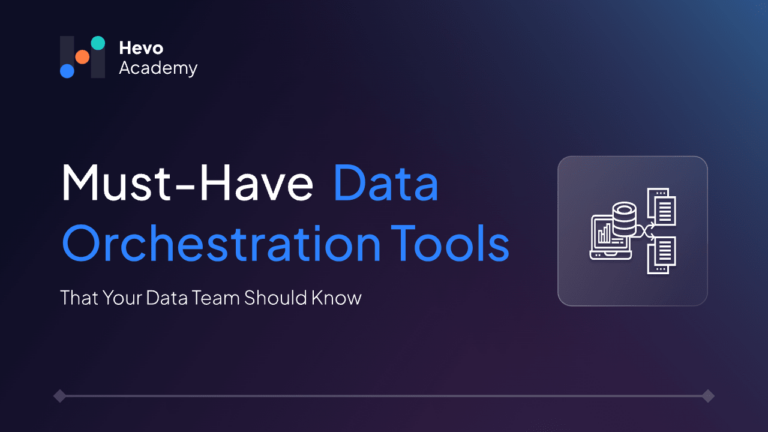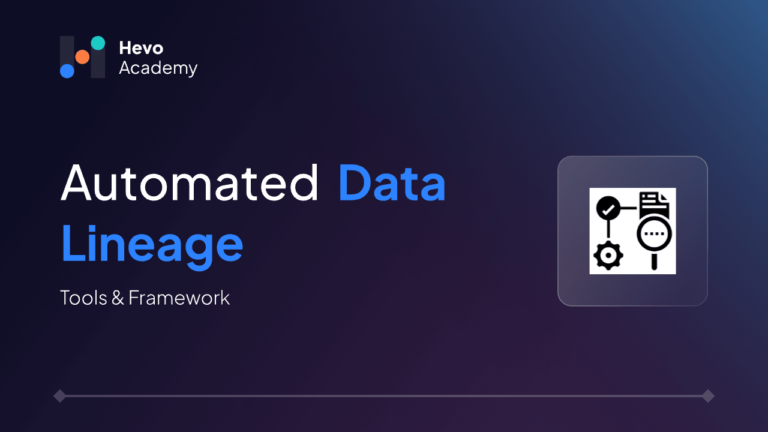The best way to ensure smooth running and achieving business goals is through workflow management. It provides free and open-source workflow systems, allowing people to automate various kinds of jobs, streamline procedures, and collaborate easily by making flexible use of many orchestration tools available with businesses’ different requirements for task management. This blog will guide you in understanding workflow systems and which workflow system open source tool is the best fit.
Table of Contents
What is a Workflow System?
A workflow system is designed to define, manage, and automate a sequence of tasks or processes within an organization.
- It ensures that the appropriate tasks are executed in sequence with the right person or system and is monitored in terms of performance.
- Workflow systems go from simple task management applications to very sophisticated platforms connected to other business systems and workflow systems.
- Workflow open source systems take it a step further with complete transparency and the ability to customize the software to fit your specific processes within the organization.
How to Pick the Right Tool?
Clearly Define your Use Case
Do you want to manage business processes and data pipeline orchestration or automate some of the IT jobs? Well, each different tool focuses on different things and should align with your application.
Ease of Use
Review your team’s technical strength. If your team members don’t have any experience with coding, use products with more user-friendly interfaces. These include n8n and ProcessMaker. Other products might suit the requirements of developer-centric teams like Apache Airflow.
Scalability
Think about your own growing needs. The ability of your tool to grow to your ever-increasing needs, you can rely on, as Camunda and Activiti have huge scalability. It works fine for large-scale projects as well.
Hosting and Privacy Requirements
If data privacy is a concern, opt for self-hosted solutions like Temporal, where all data is kept within your infrastructure.
| First Pick | Second Pick | Third Pick |
| Apache Airflow | Camunda | n8n |
| Key Features: DAG Visualization, Plugin Ecosystem, Scalable Architecture | Key Features: BPMN 2.0 Support, REST API, Enterprise Scalability | Key Features: Drag-and-Drop Interface, Prebuilt Integrations, Self-Hosting |
| Read More about Apache Airflow | Read More about Camunda | Read More about n8n |
Top 10 Workflow System Open Source Management Tools
1. Apache Airflow
Apache Airflow is an open-source tool built to orchestrate complex workflow systems. It’s quite popular with scheduling and workflow automation, more so in data engineering and analytics. Users can easily write their workflows as code because of its modular architecture.
Key Features
- DAG Visualization: Workflow systems are represented as Directed Acyclic Graphs, which allow users to see task dependencies and execution flow at a glance.
- Plugin Ecosystem: It can be easily integrated with databases, cloud providers, and external services through plugins.
- Scalable Architecture: It can execute distributedly across multiple workers, so it’s great for large datasets having a scalable architecture.
Pros & Cons
| Pros | Cons |
| Developer-friendly interface using Python. | Difficult to learn for a novice. |
| Extremely extensible with a vast plugin ecosystem. | Setup and maintenance require some expertise. |
| Active community support and documentation. | Not suited for real-time workflows. |
2. Camunda
Camunda is a robust, open-source BPMN-based workflow engine that allows users to model and automate business processes. It’s perfect for businesses needing enterprise-level process automation and workflow management.
Key Features
- BPMN 2.0 Support: Empowers businesses to create, visualize, and execute processes using an industry-standard modeling language.
- REST API: It provides easy integration with external systems for data exchange and process triggers.
- Enterprise-Grade Scalability: It can handle high-throughput workflows, ensuring reliability for mission-critical operations.
Pros & Cons
| Pros | Cons |
| Easy integration with microservices. | Less UI for the non-technical users. |
| Good monitoring and reporting facilities. | Java knowledge is required to change its configuration. |
| Light-weighted and efficient engine. | It can be an overkill to handle smaller projects. |
3. N8n
n8n is a free, open-source workflow automation tool that is meant to create workflows that may include integration with other applications or APIs. It is simple and easy to use even by non-technical persons.
Key Features
- Drag-and-Drop Interface: It makes it very easy to create workflows with no programming.
- Pre-built Integrations: Offers nodes for famous applications like Slack, Google Sheets, and GitHub; thus, it is simple to connect.
- Self-hosting: Provides full control over data and infrastructure and thus ensures compliance with all privacy regulations.
Pros & Cons
| Pros | Cons |
| Easy to use and configure. | Poor performance on heavy workloads. |
| No need for coding for basic workflows. | Advanced features require technical skills. |
| Transparent and community-driven development. | Fewer integrations than premium tools. |
4. ProcessMaker
ProcessMaker is an open-source business process management application that is used to automate workflows using a low-code method. It’s suitable for companies that are in pursuit of a straightforward means of process management.
Key Features
- Visual Process Modeling: Helps design workflows through an intuitive drag-and-drop interface.
- Dynamic Form Builder: Creates responsive forms with user input and approval.
- Task Management: Automatic assignments and tracking of tasks using different user roles and Process Intelligence.
Pros & Cons
| Pros | Cons |
| Intuitive UI/UX for a non-technical user. | Less support from the community |
| Embedded reporting and analytics capability | Heavy resource usage at higher-scale projects |
| Available on-deploy options are versatile. | Fewer configurable parameters |
5. Temporal
Temporal is an open-source workflow system that provides developers with the reliability and scalability to manage complex workflows. It is suitable for the orchestration of microservices as well as long-running processes.
Key Features
- Workflow-as-Code: Developers can compose their workflows with familiar programming languages, totally dismissing proprietary scripting.
- Stateful Execution: It ensures the workflows remain in their state even during failures or restarts.
- Multi-Language Support: It has SDKs for Go, Java, and Python languages, thus making it accessible to a wide audience.
Pros & Cons
| Pros | Cons |
| High reliability for mission-critical workflows. | Requires programming expertise. |
| Smooth integration with modern tech stacks. | Not user-friendly GUI. |
| Excellent distributed systems support. | Smaller community compared to older tools. |
6. BonitaSoft
Bonita is an open-source BPM software that allows the creation, deployment, and optimization of workflows with a flexible and extensible platform designed for both technical and business users.
Key Features
- Drag-and-drop: Bonita’s UI is easy to operate for modeling workflows.
- Data Flow: Connects via connectors and APIs to many other systems.
- Extensibility: Allows developers to incorporate custom components and logic by developing in Java and Groovy scripting.
Pros & Cons
| Pros | Cons |
| Intuitive interface for process designing. | Complex setups for advanced use cases. |
| Strong integration options. | Requires technical expertise for deep customization. |
| Active community and enterprise support are available. | Limited reporting features in the open-source version. |
7. Apache Taverna
Apache Taverna is an open-source workflow management system developed for data-intensive and scientific workflows. It lets the user create, execute, and share workflows that automate complex processes.
Key Features
- Interoperable Workflows: This makes workflows across multiple tools and services perfect for scientific research.
- Visual Workflow Builder: Drag-and-drop workflow development without writing any code.
- Provenance tracking: Captures the history of data transformations for reproducibility and audit trails.
Pros & Cons
| Pros | Cons |
| Facilitates collaboration with shared workflows. | Limited modern UI and usability for non-technical users. |
| Strong support for data-intensive applications. | Not optimized for business workflows. |
| Tracks data provenance for better transparency. | Requires learning curve for setup and usage. |
8. Activiti
Activiti is a lightweight workflow and BPM solution for developers and enterprises. It can deliver flexibility and scalability in terms of data modeling, execution, and monitoring.
Key Features
- BPMN 2.0 Compliance: This model process uses the most widely recognized standard
- REST and Java APIs: Strong integration options are offered through custom applications.
- Lightweight Runtime: It is very efficient and suitable for architectures built on microservices.
Pros & Cons
| Pros | Cons |
| Easy to embed in custom applications. | Only a few pre-built UI options for non-technical users. |
| Strong documentation and developer support. | Requires Java skills to build |
| Real-time process monitoring is supported. | Not suitable for non-technical audiences. |
9. Prefect Orchestration
Prefect is a state-of-the-art open-source workflow orchestration tool for data workflows. It makes the dependencies between complex tasks less painful and offers great reliability for data engineering use cases.
Key Features
- Dynamic task scheduling: It allows for flexibility on how and when the tasks will be executed
- Built-in Error Handling: Error Handling is done in-built by retrying the failed tasks and logging errors to be used in debugging.
- Hybrid Execution Model: Orchestrates and executes in a separate way for secure operation.
Pros & Cons
| Pros | Cons |
| Developer-friendly Python interface. | Not suitable for non-data workflows with limited features. |
| Great for data pipeline workflows. | A steep learning curve for complex workflows. |
| Lightweight and scalable. | Smaller community than older tools. |
10. Taiga.io
Taiga.io is an open-source project management and workflow tool that supports Agile methodologies, including Kanban, Scrum, and hybrid approaches. It’s ideal for teams looking to streamline collaboration and project tracking.
Key Features
- Agile Methodologies: Supports Scrum and Kanban boards for sprint planning and task tracking.
- Customizable Workflows: Tailor workflows to match your team’s specific requirements.
- Intuitive User Interface: Modern UI enhances usability and team collaboration.
Pros & Cons
| Pros | Cons |
| Free and open-source with strong community support. | Limited automation features for complex workflows. |
| Excellent for Agile project management. | Requires plugins for advanced functionality. |
| Modern and intuitive user interface. | Scalability can be challenging for large enterprises. |
Conclusion
The right workflow system can transform the way your organization does things, reduce manual effort, and make things more efficient overall. It doesn’t matter whether you like open-source customizable tools or an all-in-one managed platform: align workflows to business objectives and start driving measurable improvements in your processes today.
You can also try Hevo’s 14-day free trial to experience a better way to automate and manage your workflows. You can also check out the unbeatable pricing, which will help you choose the right plan for your business needs.
FAQs
1. What is the difference between Temporal and Argo Workflow?
Temporal is focused on managing stateful, long-running workflows with retries and fault tolerance, which is ideal for complex, distributed applications. Argo Workflow is a Kubernetes-native tool designed for orchestrating containerized, stateless workflows, making it best for CI/CD pipelines and batch jobs.
2. What is the basic workflow engine?
A basic workflow engine refers to software that automates predefined processes or tasks’ executions. It coordinates activities, manages dependencies, and follows through on the progress. As such, workflows are completed more efficiently and according to predefined rules or triggers.
3. What are the four types of workflow?
Sequential Workflow: Here, tasks are executed in some specified order.
Parallel Workflow: Multiple tasks are executed simultaneously.
State Machine Workflow: Task progression according to predefined states.
Rules-Driven Workflow: Execution is governed according to conditional logic or rules.





